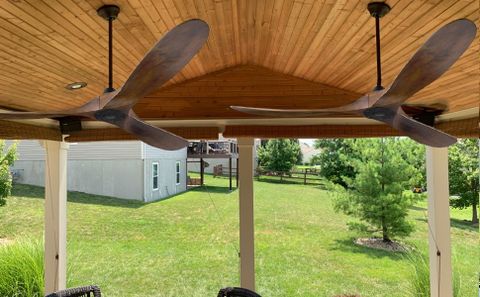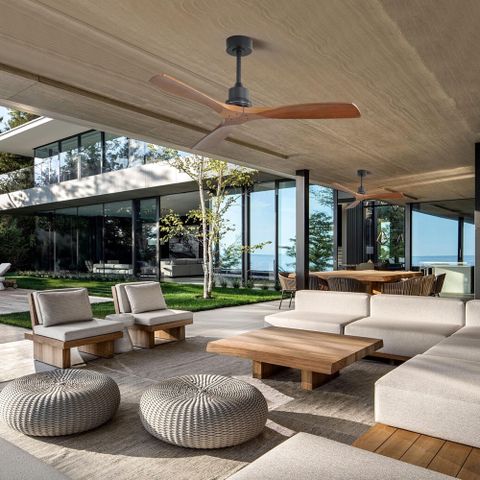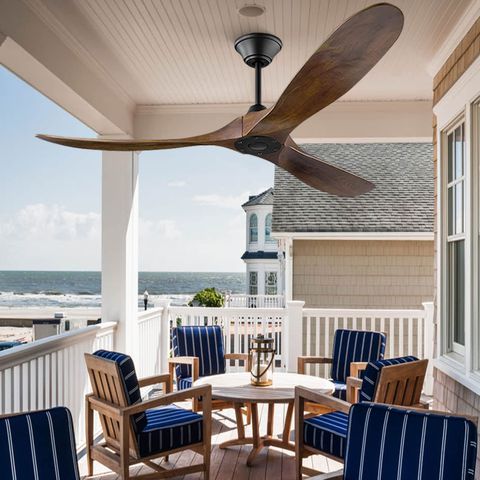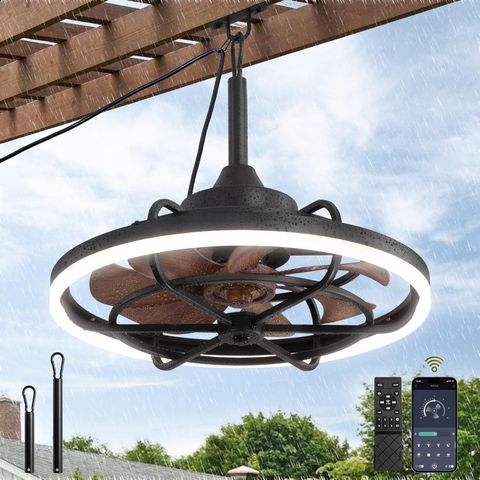Picture this: you’re enjoying a lovely dinner under the stars, the evening breeze is just right, and there’s no need to worry about heat or insects. That dream outdoor dining experience becomes reality when you thoughtfully integrate ceiling fans into your setup. These aren’t just functional elements – they’re game-changers for creating memorable evenings al fresco.
Outdoor dining spaces have evolved far beyond simple picnic setups. Today’s homeowners want their backyard or patio areas to feel like extensions of their living rooms, complete with comfort features that make them usable year-round. Ceiling fans are one of those essential elements that can transform a basic outdoor dining area into a sophisticated retreat. The key lies in thoughtful planning and understanding how to properly integrate these elements into your overall design vision.
Choosing the Right Fan Size and Style
The first step in creating a successful outdoor dining fan setup involves selecting the appropriate size and style. For dining areas, you’ll want fans that are large enough to provide adequate airflow but not so massive that they overwhelm the space. A general rule of thumb is to choose fans with blades that span between 4 and 6 feet in diameter for most outdoor dining areas. This range offers optimal air movement while maintaining visual balance.
Consider the architectural style of your home when selecting fan styles. Modern homes often pair well with sleek, minimalist designs featuring clean lines and contemporary finishes. Traditional homes might benefit from more ornate fixtures with decorative elements. The fan’s blades should complement rather than compete with your existing décor.
For example, a farmhouse-style dining area might look stunning with a rustic wooden blade fan in warm tones, while a contemporary space could showcase a brushed metal option with geometric blade shapes. The key is matching the fan’s aesthetic with the overall theme of your outdoor dining zone.
Weather Considerations and Material Selection
Outdoor environments present unique challenges that indoor fans simply don’t face. Weather exposure means dealing with moisture, UV rays, and temperature fluctuations that can damage standard ceiling fans. This is why material selection becomes critical for outdoor installations.
Look for fans specifically rated for outdoor use, typically marked with an IP rating indicating water resistance. A minimum of IP44 protection is recommended for most outdoor applications, though higher ratings like IP65 offer even better protection against dust and moisture. Materials like aluminum, stainless steel, and marine-grade components handle weather conditions much better than standard materials.
Additionally, consider fans with built-in LED lighting options that can provide both ambiance and functionality. These lights should also be weather-rated and ideally dimmable to adjust the mood for different times of day. Many modern outdoor fans combine cooling and lighting capabilities, offering dual functionality that maximizes space efficiency.
The investment in quality weatherproof materials pays dividends over time, reducing maintenance needs and ensuring longevity.
Proper Installation Height and Placement
Getting the height and placement right makes all the difference between a functional installation and one that feels awkward or unsafe. For dining areas, fans should hang approximately 8 to 10 feet above the dining surface to ensure comfortable airflow without creating drafts that might disturb diners.
Placement matters just as much as height. Position fans so they don’t directly blow air onto seating areas where people will be sitting. Instead, aim for a gentle breeze that moves air around the entire dining space. This often means installing fans slightly above the center of the dining area, allowing the airflow to naturally circulate outward.
Consider the layout of your dining area when planning placement. If you have multiple dining zones, you might need several fans or a larger fan that covers a broader area. Some installations incorporate fans with adjustable tilt mechanisms, allowing for fine-tuning of airflow direction based on seasonal needs.
Think about how people move through the space too. Fans shouldn’t interfere with overhead structures or create safety hazards for guests walking underneath. Proper clearance ensures everyone can enjoy the benefits without worry.
Lighting Integration and Ambiance Creation
The best outdoor dining experiences combine practical comfort with visual appeal. Lighting integration is where ceiling fans truly shine, offering opportunities to enhance both function and atmosphere.
Many modern outdoor fans come with integrated LED lighting systems that can serve as primary or supplemental illumination. These lights should be positioned to avoid glare while providing adequate brightness for dining activities. The ability to control light levels separately from fan speed creates flexibility for different occasions.
For instance, a soft, warm light setting works perfectly for romantic dinners, while brighter lighting might be preferred for casual gatherings or when dining during evening hours. Consider adding dimmer switches or smart controls that allow you to adjust lighting based on time of day or event type.
Some designers opt for string lights or additional accent lighting that complements the main fan lighting. This layered approach creates depth and visual interest while ensuring adequate illumination for practical use. The goal is to make the space feel inviting and well-lit without overwhelming the senses.
Maintaining Comfort Throughout Different Seasons
Outdoor dining spaces need to work year-round, which means fans must adapt to changing conditions and seasons. This requires thoughtful consideration of both fan operation and overall environmental factors.
In summer months, fans become essential for managing heat and humidity. They work best when paired with proper ventilation and shade elements. The rotating blades create air movement that helps evaporate moisture from skin, providing a cooling effect even in high temperatures.
During cooler months, some fans can still provide comfort, but the approach changes. Consider fans with reversible blades or motor directions that can be adjusted for winter use. In cold weather, fans can actually help distribute warm air more evenly throughout the space, preventing hot spots and cold corners.
Some installations include motorized adjustments that automatically respond to temperature changes or user preferences. These smart features can make a significant difference in year-round usability. The key is choosing equipment that can handle seasonal variations without requiring major modifications or replacements.
Budget-Friendly Options and Smart Shopping Strategies
Not every homeowner has unlimited budgets for outdoor dining enhancements, but that doesn’t mean you can’t achieve great results. Smart shopping and strategic planning can deliver impressive outcomes without breaking the bank.
Start by prioritizing what aspects of the fan system matter most to your daily use. Is it primarily cooling during summer? Do you need reliable lighting for evening dinners? Understanding priorities helps focus spending on the most impactful elements.
Consider buying quality fans that will last longer rather than cheaper options that may require frequent replacement. A good outdoor fan can easily last 15-20 years with proper maintenance, making the initial investment worthwhile. Look for sales during peak seasons or when retailers are clearing inventory for new models.
DIY installation can save money, but only if you have the necessary skills and tools. Professional installation ensures proper mounting and electrical connections, which are crucial for safety and performance. Sometimes the cost savings of doing it yourself aren’t worth the potential risks or rework costs.
Many stores offer financing options or extended warranties that can make quality installations more affordable. Comparing prices across multiple retailers and reading reviews from actual users provides insight into value and reliability.
Integrating ceiling fans into outdoor dining setups isn’t just about adding another piece of furniture – it’s about creating a complete sensory experience that extends your living space. When done thoughtfully, these installations provide comfort, style, and functionality that make outdoor dining enjoyable throughout the year. The key lies in understanding your specific needs, choosing appropriate equipment, and considering how each element works together to create a cohesive outdoor environment. Whether you’re planning a complete renovation or simply looking to enhance your current space, investing in quality ceiling fans pays dividends in comfort and enjoyment for many seasons to come. The effort you put into thoughtful planning today will translate into countless pleasant memories shared under the gentle breeze of your custom outdoor dining setup.














